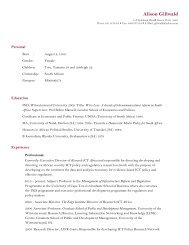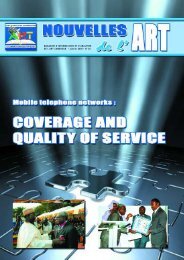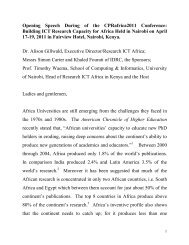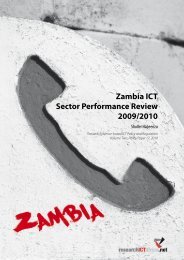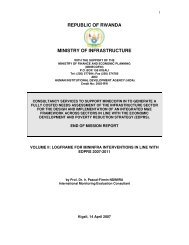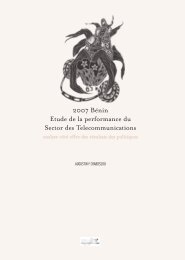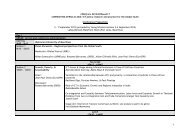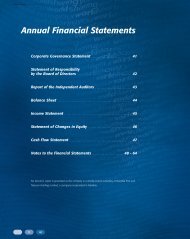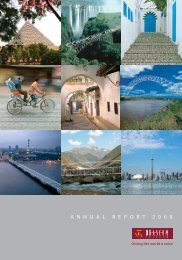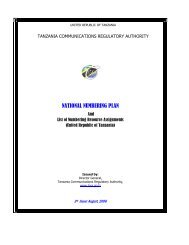Rwanda Telecommunications Sector Performance Review 2007
Rwanda Telecommunications Sector Performance Review 2007
Rwanda Telecommunications Sector Performance Review 2007
You also want an ePaper? Increase the reach of your titles
YUMPU automatically turns print PDFs into web optimized ePapers that Google loves.
<strong>Rwanda</strong><br />
Duplication of networks can create excess capacity due to the limited<br />
number of customers, design limitations and the cost of management,<br />
maintenance and repairs, which may make service unit costs high.<br />
Unused capacity increases the cost of providing network services in two<br />
ways: (1) investment takes place above the level necessary to meet consumer<br />
demand, increasing the capitalisation of the sector (and lowering<br />
the overall rate of return on capital), and (2) by reducing the potential<br />
business available to each network below the level used to justify the<br />
investment. Both of these effects increase the real cost per unit of transmission<br />
and limit the scope for price reductions.<br />
TELEMEDICINE NETWORK<br />
Telemedicine Network is a backbone network linking national referral<br />
hospitals and laboratories throughout the country. Development of the<br />
telemedicine network is included in the NICI plan II with the objective of<br />
expanding accessibility to health services and enabling unlimited<br />
exchange of data between different hospitals. Institutions affected<br />
include:<br />
University Central Hospital of Kigali;<br />
University Central Hospital of Butare;<br />
King Faysal Hospital, Kigali;<br />
Cyangungu Hospital;<br />
National Pharmaceutical Laboratory;<br />
Ruhengeri Hospital.<br />
RWANDA EDUCATION AND RESEARCH NET-<br />
WORK<br />
The <strong>Rwanda</strong> Education and Research Network is a high capacity network<br />
over mainly fibre optics linking local area networks of various<br />
higher learning institutions and research centers for common internet<br />
connectivity, general research exchanges, administration and e-learning.<br />
The first phase affects public higher learning institutions and<br />
research centres as follows:<br />
National University of <strong>Rwanda</strong> (NUR), Southern Province;<br />
Kigali Institute of Education (KIE), Kigali;<br />
Kigali Institute of Science and Technology (KIST), Kigali;<br />
Kigali Health Institute (KHI), Kigali;<br />
Higher Agriculture and Veterinary Institute (ISAE), Northern<br />
Province;<br />
School of Finance and Banking (SFB), Kigali.<br />
In addition, there are two research centres which are:<br />
Institute of Agricultural Science of <strong>Rwanda</strong> (ISAR), Southern<br />
Province;<br />
Institute of Research in Science and Technology (IRST), Southern<br />
Province.<br />
Private higher learning institutions (about 10) spread across the country<br />
are also being considered for inclusion in the second phase of the<br />
<strong>Rwanda</strong> Education and Research Network.<br />
32 <strong>2007</strong> <strong>Telecommunications</strong> <strong>Sector</strong> <strong>Performance</strong> <strong>Review</strong>



